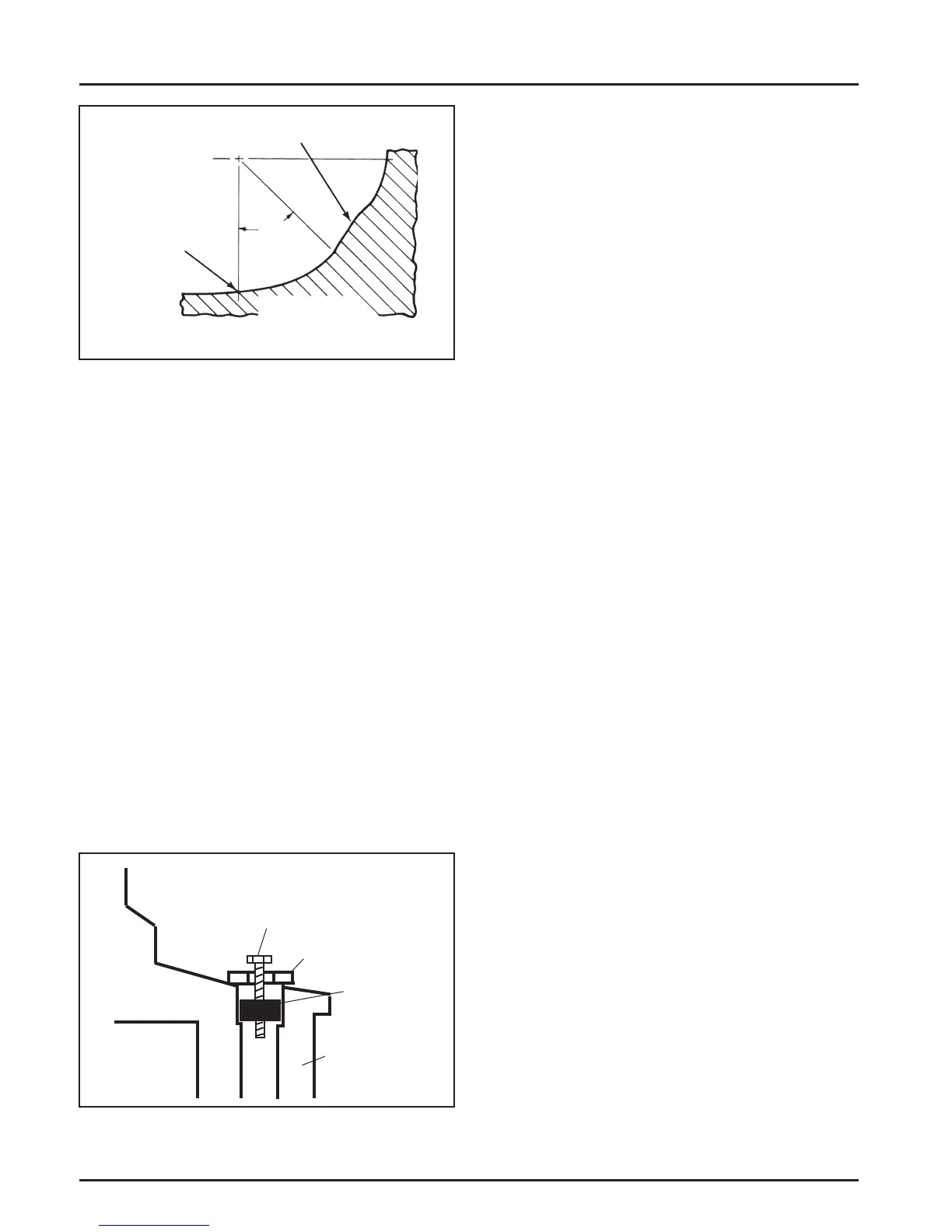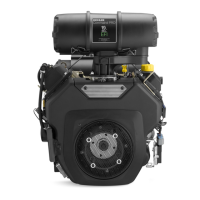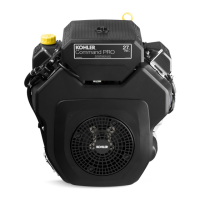9.2
Section 9
Inspection and Reconditioning
Procedure to Install New Plug:
1. Use a single cylinder camsha pin Part No.
47 380 09-S as a driver and tap the plug into the
plug bore until it seats at the bo om of the bore.
Make sure the plug is tapped in evenly to prevent
leakage.
Crankcase
Inspection and Service
Check all gasket surfaces to make sure they are free of
gasket fragments. Gasket surfaces must also be free of
deep scratches or nicks.
Check the cylinder bore for scoring. In severe cases,
unburned fuel can cause scuffi ng and scoring of the
cylinder wall. It washes the necessary lubricating
oils off the piston and cylinder wall. As raw fuel
seeps down the cylinder wall, the piston rings make
metal to metal contact with the wall. Scoring of the
cylinder wall can also be caused by localized hot
spots resulting from blocked cooling fi ns or from
inadequate or contaminated lubrication.
If the cylinder bore is badly scored, excessively worn,
tapered, or out-of-round, resizing is necessary. Use
an inside micrometer to determine the amount of
wear (refer to Specifi cations, Tolerances, and Special
Torque Values in Section 1), then select the nearest
suitable oversize of either 0.25 mm (0.010 in.) or
0.50 mm (0.020 in.). Resizing to one of these oversizes
will allow usage of the available oversize piston and
ring assemblies. First, resize using a boring bar, then
use the following procedures for honing the cylinder.
Honing
While most commercially available cylinder hones
can be used with either portable drills or drill presses,
the use of a low speed drill press is preferred as it
facilitates more accurate alignment of the bore in
relation to the cranksha crossbore. Honing is best
accomplished at a drill speed of about 250 RPM and
60 strokes per minute. A er installing coarse stones in
hone, proceed as follows:
1. Lower hone into bore and a er centering, adjust
so that the stones are in contact with the cylinder
wall. Use of a commercial cu ing-cooling agent is
recommended.
2. With the lower edge of each stone positioned
even with the lowest edge of the bore, start drill
and honing process. Move the hone up and down
while resizing to prevent the formation of cu ing
ridges. Check the size frequently.
Figure 9-1. Crankpin Fillets.
The connecting rod journal can be ground one size
under. When grinding the cranksha , grinding stone
deposits can get caught in the oil passages, which
could cause severe engine damage. Removing the
crankpin plug when the cranksha is ground provides
easy access for removing any grinding deposits that
may collect in the oil passages.
Use the following procedure to remove and replace
the plug.
Procedure to Remove Crankshaft Plug:
1. Drill a 3/16 in. hole through the plug in the
cranksha .
2. Thread a 3/4 in. or 1 in. long self-tapping screw
with a fl at washer into the drilled hole. The fl at
washer must be large enough to seat against the
shoulder of the plug bore. See Figure 9-2.
3. Tighten the self-tapping screw until it draws the
plug out of the cranksha .
Figure 9-2. Removing Crankpin Plug.
45°
High Point from
Fillet Intersections
This Fillet Area
Must Be Completely
Smooth
Minimum
The Fillet Must
Blend Smoothly
with the Bearing
Journal Surface
Flat Washer
Self-Tapping Screw
Plug
Crankshaft
